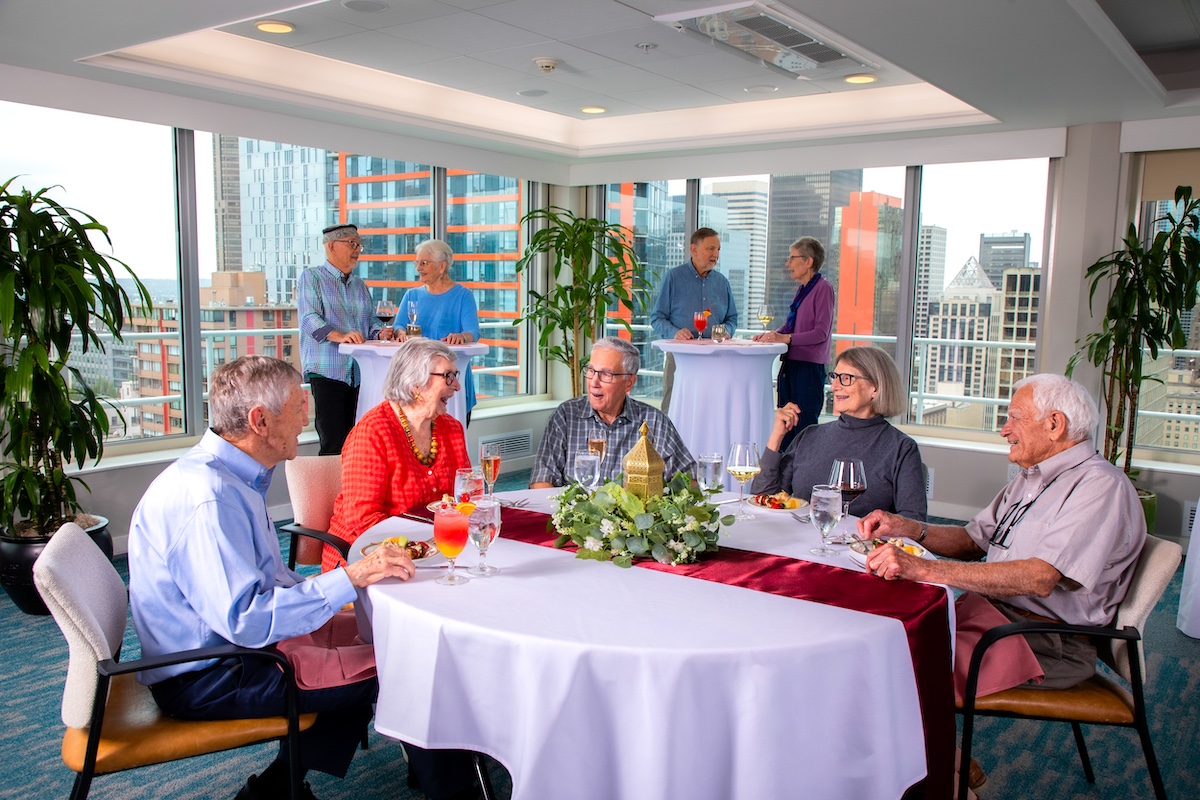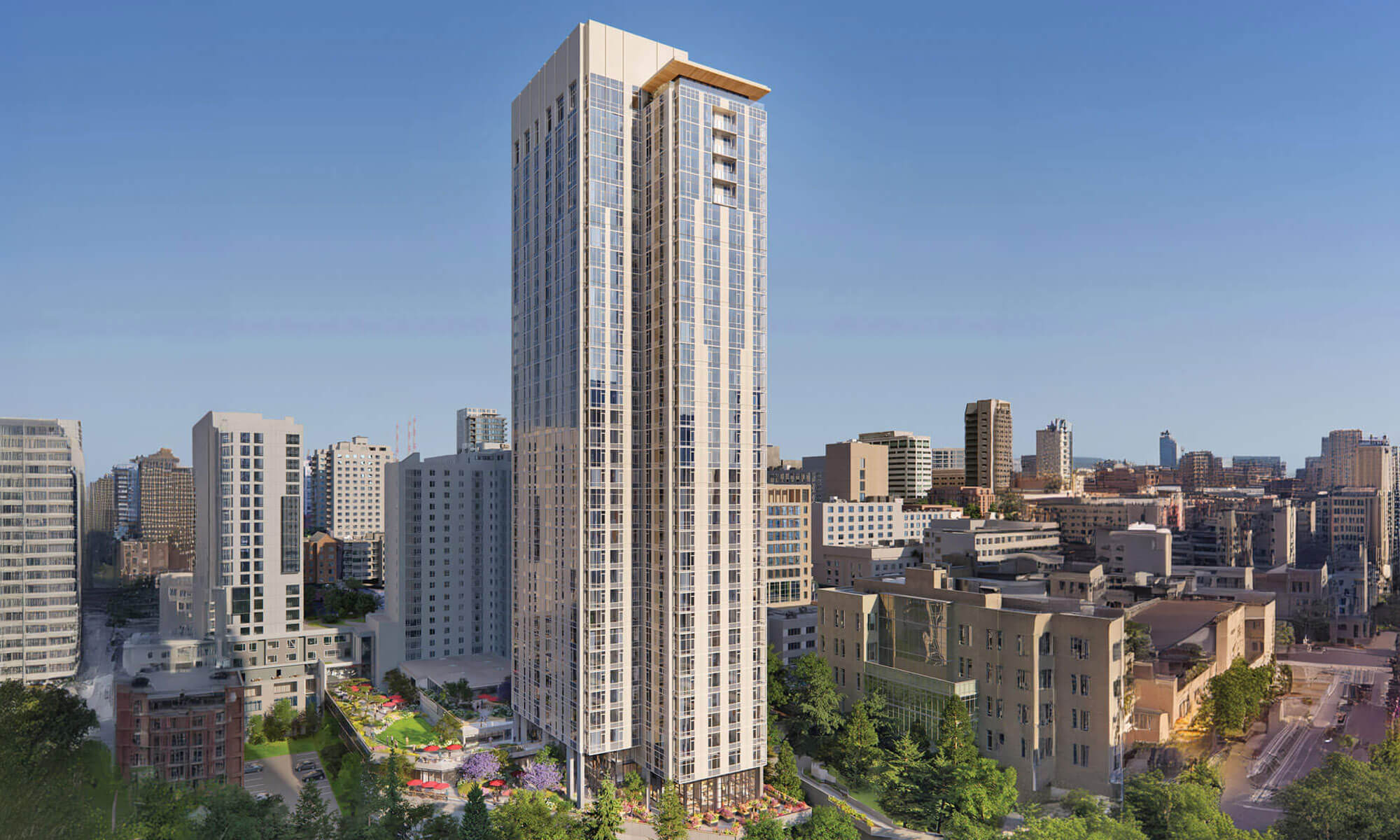How Seattle retirement community Horizon House helped 42 residents move while keeping its heart in the right place.
3-minute read
In last month’s overview of the upcoming West Tower expansion, our focus was on the vision behind Horizon House’s growth—preserving 60+ years of community culture while building for the future. Vision is one thing, but the real measure of a culture is translating that vision into action when it really matters.
That translation fell to Sales Manager Valerie Kilgore, whose job was to relocate 42 residents from Horizon House‘s current West Wing, which will be demolished so the new West Tower can be built. Those residents thought they‘d made their last move when they chose retirement in First Hill, so the challenges were obvious. How these challenges were met offers valuable insight into both the character of this Seattle retirement community and the remarkable residents who call it home.
The First Challenge: Time
Kilgore started meeting with residents in early 2023, beginning a relocation process to be completed by this Thanksgiving. The West Tower is planned to be Seattle‘s first LEED Gold-certified Life Plan Community tower, featuring 202 stunning apartments with state-of-the-art amenities and unparalleled views of the city.
Instead of rushing the process, Horizon House ensured that the residents relocating from the West Wing had the time and support they needed to make thoughtful decisions about their new homes in this urban retirement living community.
And instead of just enduring the process, residents found ways to engage with it on their own terms.
A New Perspective on Retirement in First Hill
Take the longtime West Wing resident—a retired architect—who was first to move. When relocation became necessary, she made an interesting choice by requesting a higher floor overlooking the construction site. “As a retired architect, she took the complete opposite approach from most people,” explains Kilgore. “She wanted to watch it being built.”
It‘s the kind of intellectual curiosity and independent thinking typical of many Horizon House residents. Rather than focusing on what she was losing, she found a way to engage with the change happening around her.
The Referral Test
One measure of resident satisfaction proved particularly revealing. “Some of our more vocal residents were still our biggest referral partners,” Valerie observes. “The feelings they were sharing with us about the transition and the satisfaction they were sharing with their friends at the same time were very different.”
So, while residents might not have approved of the timing or necessity of their moves, they still saw value in the Life Plan Community itself and the way the situation was being handled.
A Strong Framework of Support from Staff and Neighbors
Rather than a one-size-fits-all approach, Horizon House provided individualized support based on what each resident needed—from pre-move rightsizing assistance and professional move management to extensive apartment showings where residents could explore different floor plans and discover unexpected possibilities. Dedicated meetings addressed specific concerns throughout the process, with flexible timelines that respected residents‘ emotional readiness.
The community culture provided its own support as well. “West Wing residents called friends who lived in apartments with floor plans they were considering and asked to take a look,” Kilgore notes. “There were a lot of get-togethers and chatting about what they liked about their apartments.”
Some of the strongest advocacy came from neighbors in other buildings who felt protective of their friends navigating this transition. “They felt terrible for what their neighbors were going through,” Kilgore remembers. This protective instinct speaks to genuine connections that extend beyond casual neighborliness to real concern for each other‘s well-being.
Unexpected Discoveries
Another resident‘s experience highlights how transitions can reveal possibilities. Her original garden-level apartment offered a coveted waterfall view but limited natural light—a familiar trade-off in Seattle, especially during winter months.
Her new placement on a higher floor led to a discovery that perfectly captures the benefits of urban retirement living. “She called one day and said, ‘Do you know that you can see sunshine in Seattle in November?‘” Valerie recalls.
The practical benefits of different floor plans became apparent to many residents during the selection process. While they couldn‘t replicate their original views, they discovered advantages they hadn‘t considered before.
What It Means
As construction begins in late 2025 on this sustainable senior living community, the West Tower represents more than new apartment homes and amenities. The relocation process has demonstrated how Horizon House handles complex situations that affect residents‘ daily lives.
Residents who‘ve moved aren‘t just adapting to new spaces—they‘re discovering unexpected benefits, like November sunshine through unobstructed windows. They‘re using their professional knowledge to engage with major construction projects. And they continue recommending the community to friends, even while navigating their own transitions.
These responses reflect the independent thinking and intellectual curiosity that have always defined Horizon House residents. When faced with change, they find ways to not just endure, but thrive.
Ready to learn more about joining Seattle‘s most distinctly Seattle retirement community? Visit WestTower.org or call 206-382-3100 to explore your options today.




